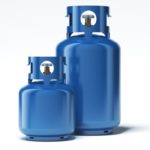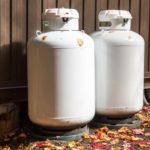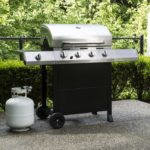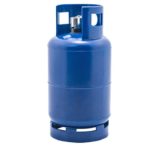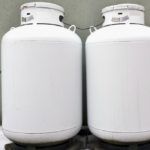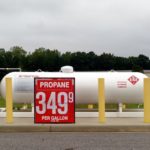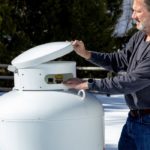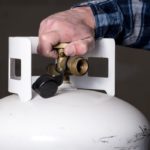More and more people are ditching electric heat for propane and natural gas, and you might be considering the same. These fossil fuels are still a much more efficient option than electricity, especially when you consider how cheap they are to install or use day-to-day. Obviously they aren’t great for global warming, but if you’re considering natural gas and propane as options, you may wonder what the key differences are.
Propane is generally safer, more efficient, and more environmentally friendly than natural gas; however, it is also more expensive. Propane is delivered to your home in tanks, while natural gas is transported through local gas lines. Both are highly flammable and should be handled with care.
Let’s break down these differences further so that you can make an informed choice regarding the best option your home. We’ll take a close look at propane and natural gas in terms of cost, safety, and efficiency. While using an electric option would be better for the environment technically, sometimes you just need that quick heat and energy storage of propane or natural gas.
What Is Natural Gas?
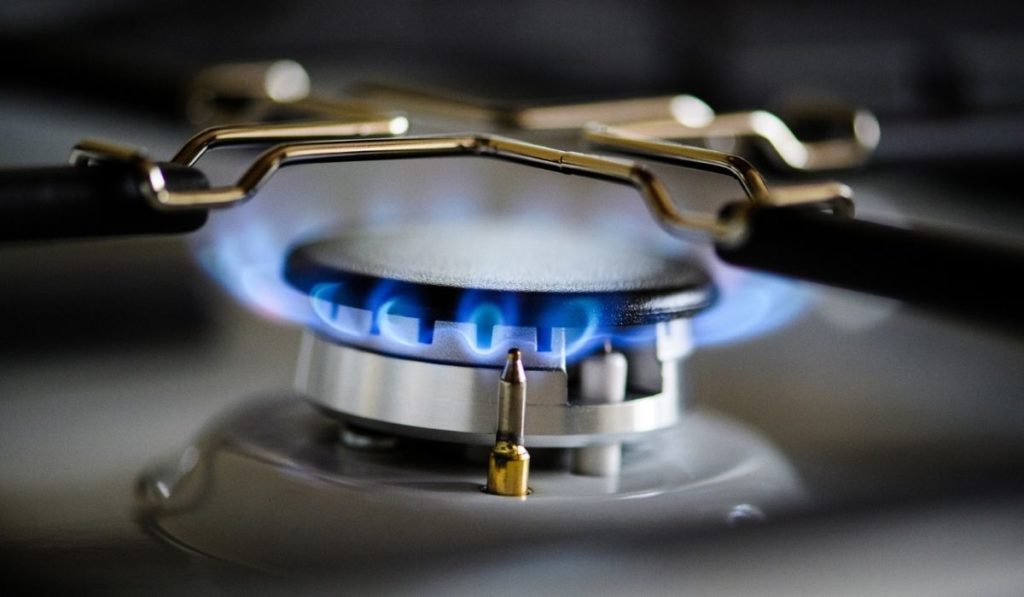
Natural gas is a completely nonrenewable, odorless, colorless, flammable, and non-toxic source of hydrocarbons. Its main component is methane, which accounts for around 70-90% of its composition. Propane, butane, and ethane are also present in the mixture.
Natural gas must be combined with crude oil once extracted from the ground in order to be burned as fuel. This process involves the extraction of propane, butane, and ethane.
What Is Propane?
Propane is also known as LPG, or liquefied petroleum gas. This is a flammable, colorless, odorless, non-toxic liquid gas usually compressed, stored, and delivered as a liquid. Propane is a clean, reliable, and safe source of energy.
This gas is produced from both crude oil refinement and natural gas processing. North America produces about 97% of the propane used in the United States. Gas detection is facilitated by adding an identifying odor, just as with natural gas.
One interesting thing to note is that propane is typically available in smaller sizes. Consider these Coleman 16oz Propane Fuel Tanks (on Amazon), which are meant for handheld torches or small camp stoves. So, propane may be a little more flexible to use as a fuel source in general when you need something portable.
Is It Cheaper to Use Natural Gas or Propane?
Natural gas is usually cheaper than propane, but that’s basically because the former is less efficient. Last we checked, natural gas costs about $6.23 per 1,000 cubic feet, or roughly one million BTUs. A gallon of propane, meanwhile, costs $2.41 on average in the United States. About 11.20 gallons of propane are contained in one million BTUs of natural gas.
Therefore, you would pay $6.23 and $26.99, respectively, for the same amounts of natural gas and propane. This is just an example, of course, since prices fluctuate.
Propane produces almost twice as much heat as natural gas, so you’d have to use more natural gas than propane to, for instance, heat water. If you’d like to know how hot propane and natural gas burn, you can check out this article.
By way of summary, though, natural gas produces about 1,012 BTUs (British Thermal Units) of heat per cubic foot, while propane generates 2,520 BTUs per cubic foot! This makes propane more efficient than natural gas.
However, in some areas, natural gas is more expensive than propane. It usually costs a lot to install a new natural gas line — much more than you’ll need to buy a propane tank. Still, once you have this gas line installed, you won’t have to worry about the additional cost to your utility bill, so you can call it a worthy investment.
Propane heating systems are also less expensive to repair than other heating systems, although you should replace old propane tanks and furnaces to avoid unnecessary utility bills.
Is Propane Safer Than Natural Gas?
Propane and natural gas are almost odorless and colorless, but they are both highly flammable and should be handled carefully. Mercaptan and tert-Butylthiol are harmless chemicals that manufacturers add to help people detect leaks. They usually smell like sulfur.
However, natural gas lines come with an infrastructure (and red tape) that makes leaks difficult to detect and fix. The public utility commission and utility companies must reach an understanding before taking action on repairs or upgrades. Sometimes, this can take a while, and accidents happen when gas lines are left unattended.
In addition, natural gas leaks can be very difficult to detect because the fuel is odorless in its natural state. Some companies that provide natural gas add sulfur to make it easier to detect leaks.
Nonetheless, propane tanks are much less likely to explode. In case of an explosion, propane tanks are not connected to widespread gas lines, so their impact is less critical.
Propane tanks also have a safety valve that opens if the pressure in a container becomes too high to prevent an explosion. This might be counter-effective because it can lead to a gas leak and a potential fire hazard if there’s any flammable material nearby.
Considering these factors, propane is generally safer to use than natural gas.
Other Differences Between Propane and Natural Gas
Besides cost, efficiency, and safety, other factors set the two options apart, and we’ll take a look at some of them here:
Delivery and Storage Methods
Homeowners access natural gas through gas lines, while propane usually comes in propane tanks. This means any neighborhood without gas pipelines won’t have access to natural gas.
With propane, you don’t have to worry about that. There are professionals who can deliver propane to you, no matter where you are in the country. There’s a downside here — you’ll always have to wait for deliveries, so you’d better hope there’s no emergency, like a large snowstorm, to delay the technician from getting your propane across to you.
Note that a natural gas leak will increase your utility bills more than a propane tank leak.
In terms of storage, propane is stored in tanks as liquid because it’s sealed up under pressure. This liquid becomes gas when it’s released through the tank valve. On the other hand, natural gas can be stored as compressed natural gas (CNG), uncompressed gas, or liquefied natural gas (LNG).
Chemical Compounds
Propane is the cleanest burning fossil fuel, releasing about half as much carbon dioxide as gasoline. Additionally, it does not harm the environment.
Natural gas is largely made of methane, a potent greenhouse gas, about 84 times more powerful than carbon dioxide. Natural gas can also be more environmentally friendly than most fossil fuels since it burns more cleanly.
Therefore, natural gas pollutants are usually released into the atmosphere only when there is a leak in a pipeline or an accident during drilling. Over time, methane breaks down on its own into carbon dioxide.
Methane and propane are less harmful to the environment than electricity in many areas in the United States because coal power plants are popular. Although both fuel types are hydrocarbons, their chemical compositions differ.
Installation
Natural gas and propane can be used in many appliances, but each fuel source requires different fittings. If you plan on switching from propane to natural gas or vice versa, you’ll need conversion kits. You’d have to get these kits if the appliances don’t come with them.
Unfortunately, you cannot easily convert electric appliances such as heaters, ovens, or water heaters to natural gas or propane. If you’d like to use appliances that use propane or natural gas instead of electric appliances, you’ll need to replace them.
Underground pipes supply your home with natural gas, and this is limited to certain areas. Typically, propane is stored in tanks that must be periodically replaced or refilled. There are small, portable containers and long, bulky tanks.
A larger tank can be buried underground or placed in your yard. Several propane pipes begin at the valve on the tank, so some might be outside. Gas conduits for indoor use begin at your gas meter, and outdoor gas pipes belong to your local utility company.
Burying a tank is similar to connecting your home to a natural gas pipeline. If grass or other plants are damaged, a professional can replace them. Putting a propane tank above ground might be quicker and easier, but you might not like how it looks. If you decide to place the tank above ground, consider surrounding it with flowers and other decorations to enhance the overall look of your yard.
The propane tank will need to be removed or emptied if you convert to natural gas or quit using propane and switch to electric appliances. It is difficult to remove a buried tank, so you should also consider that.
Can You Use a Propane Tank for Natural Gas?
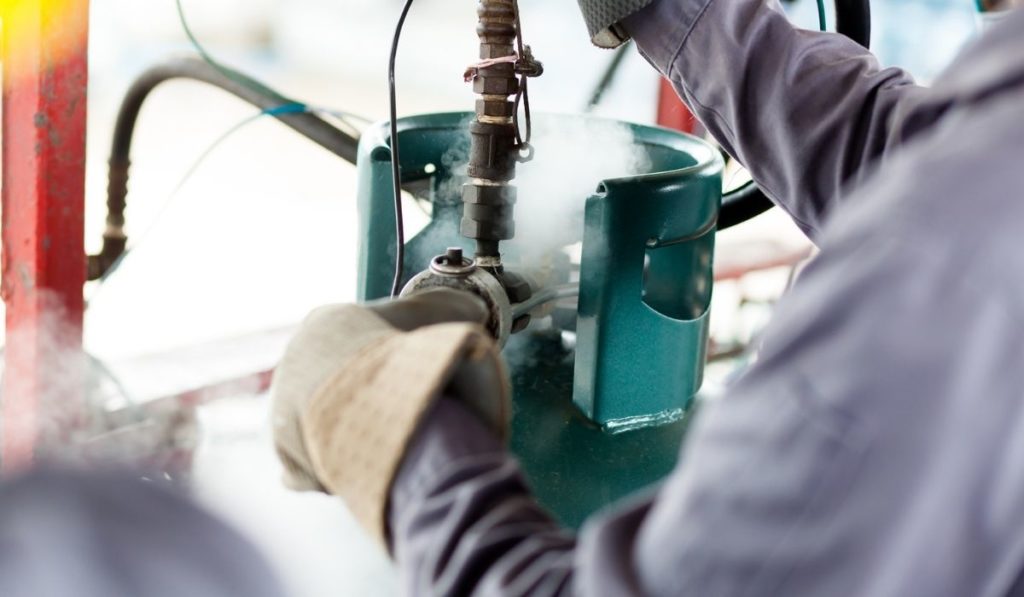
No, you cannot use a propane tank for natural gas. All gaseous fuel must be liquidized before you can put a reasonable amount of it into a tank. However, certain fuels are easier to liquify than others. The boiling point of propane at atmospheric pressure is -44 degrees Fahrenheit, while the boiling point of natural gas at atmospheric pressure is -260 degrees Fahrenheit.
That means for natural gas to be turned into a liquid stored in a tank, it must be cooled to a much lower temperature than propane.
However, propane isn’t usually kept liquid at low temperatures. Propane is stored in high-pressure tanks at a pressure of 850 kPa at room temperature, or 70 degrees Fahrenheit. Metal tanks can be used for this purpose.
Natural gas must be at room temperature and at 32,000 kPa pressure to stay as a liquid. Domestic metal tanks are incapable of withstanding this pressure. Due to its symmetry, natural gas cannot be stored in household tanks. Although methane could be stored in a tank in the gaseous state, its low density would make it impossible to store a usable quantity.
A refinery plant processes and stores natural gas, which is then pumped via pipes to households in the gas state.

